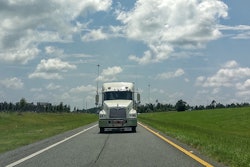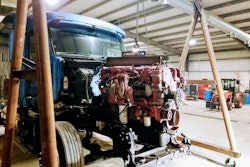Over the course of just a few years, the Starsky Robotics company, after a reported infusion of almost $17 million in venture capital in 2018, moved quickly in its attempt to make good on a vision of turning a trucker’s job into an office desk affair.
As its then senior vice president for trucking operations, Paul Schlegel, explained in detail for GATS attendees in August in a panel discussion (which you can listen to via the player above), the company envisioned remote operations for its eventual semi-autonomous trucks and was focused on short, repeatable lanes in testing and developing the technology that undergirded its systems. It even in fact took the driver entirely out of the truck in a demonstration on a very short run in Florida last year.
As of this month, however, says Schlegel, while “it’s still officially a business … I don’t think anybody is technically on the payroll” of the trucking company and tech developer any longer.
Last year, within about nine months, Schlegel says, he was tasked with building up a viable and, more or less, traditional trucking company, with operations headquartered in the Dallas area. Schlegel ramped up operations from just a few trucks to as many as 50 just before the beginning of the end in November last year. Starsky Robotics was set to close another multimillion-dollar round of venture capital funding when an investor pulled out and the entire round fell apart, he says. He still believes the company “had the right approach” to employing semi-autonomous truck technology, and the veteran driver staff to support it, in the short term. “We had so many customers who were interested in doing business with us on short lanes. We were gearing up on production of trucks” outfitted with the right technology. “We’d engaged with manufacturers about putting our system on. We had done all that, and had totally redesigned our [remote driver] tele-ops stations to be ergonomically appropriate.
“We were on the right path – but venture capital is a little fickle.”
VC investors weren’t interested enough in being part of an asset-heavy business like the trucking company Starsky had become, Schlegel believes, where building equity slowly with those assets and a big idea looked like the chief principal value. “They wanted to put money into engineers and sell that idea to somebody else,” he says.
When the funding round fell apart, the company tried everything it could think of in the short time it had to keep the lights on, “because we were going to run out of cash,” Schlegel says. That included reaching out to private equity investors and potential outright buyers.










